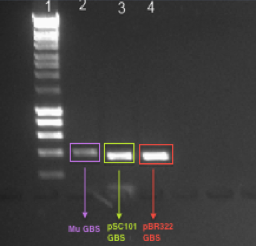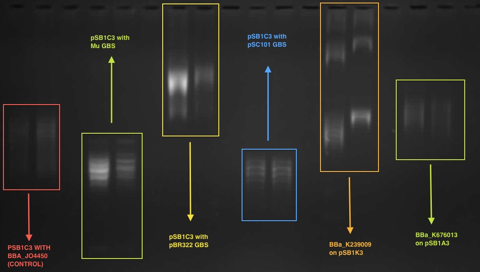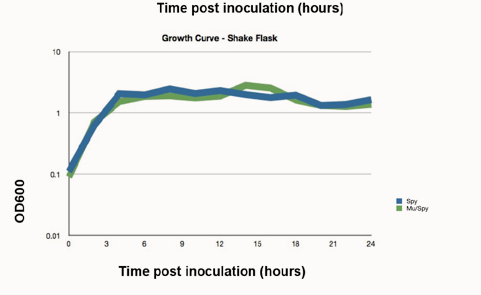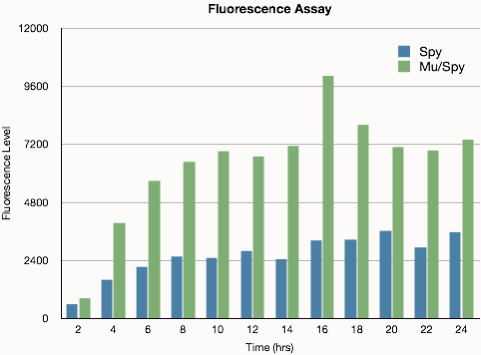Team:UCL London/Research/MagnetoSites/Results
From 2011.igem.org
Results
Gel photo after PCR cloning of the individual gyrase binding sites
The three bands below the 400 bp mark on the gel photo indicate successful PCR of our gyrase binding sites
Chloroquine gel displaying the difference in plasmid supercoiling between control and the three GBS, MU-Spy and Spy
Using chloroquine agarose gel to assay supercoiling, we demonstrated Mu GBS and GBS from pSC101 significantly increase supercoiling of the host plasmid by 42% and 25% respectively. The presence of the pBR322 GBS has significantly altered the level of migration.
As we intended at the design stage, introduction of a mu phage GBS (to make BBa_K676013) has significantly increased supercoiling of the 2009 Device, thus increasing its manufacturability as a commercial pDNA product. The presence of the GBS increased migration (supercoiling) by 10%.
The effect of the presence of a Mu GBS in a plasmid on the stress response
The graph indicates a clear distinction in the level of GFP expression between cell with Spy device and a Mu GBS/Spy device ligation. So this clearly proves that the presence of the Mu bacteriophage gyrase binding site creates a difference in the level of expression of GFP from the plasmid which is conclusive towards an increased stress response.
Using fluorescence measurements and shake flask growth cultures we successfully improved the 2009 BBa_K239009 Device by demonstrating how it can function as a better sensor for the stress experienced by E. coli cells harbouring and supercoiling a plasmid that contains a phage GBS. By incorporating a Mu phage GBS , we increased the level of negative supercoiling of the Spy device causing an “easier” expression of GFP in the cells. Thus , we hypothesize that there will be sufficient level of GFP expression even at a very low level of shear stress detected by the Spy device.
 "
"



